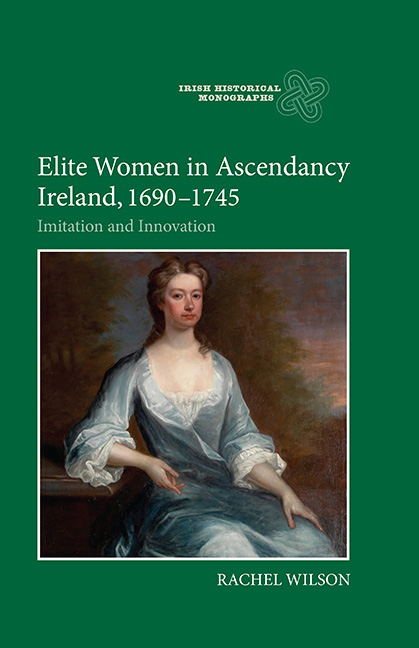Book contents
- Frontmatter
- Dedication
- Contents
- Acknowledgements
- Abbreviations
- A Note on the Presentation of Material in the Text
- Introduction
- 1 The Making and Breaking of a Marriage
- 2 Mothers and Children
- 3 The lady of the house
- 4 Widows, Guardians and Estate Managers
- 5 Society Queens
- 6 Political Players
- 7 Institutional philanthropy
- Conclusion
- Appendices: Family Trees
- Bibliography
- Index
4 - Widows, Guardians and Estate Managers
Published online by Cambridge University Press: 11 May 2021
- Frontmatter
- Dedication
- Contents
- Acknowledgements
- Abbreviations
- A Note on the Presentation of Material in the Text
- Introduction
- 1 The Making and Breaking of a Marriage
- 2 Mothers and Children
- 3 The lady of the house
- 4 Widows, Guardians and Estate Managers
- 5 Society Queens
- 6 Political Players
- 7 Institutional philanthropy
- Conclusion
- Appendices: Family Trees
- Bibliography
- Index
Summary
On 9 February 1704, Charles Boyle, 3rd earl of Cork and 4th earl of Burlington died in England. His will, signed just five days earlier, named his 32-year-old wife, Juliana, as guardian to their four surviving daughters and only son, Richard. It also named her as custodian of the vast Boyle estates for the duration of the new earl's minority. In Ireland, this meant huge swathes of counties Cork and Waterford, including the principal Irish family seat at Lismore Castle. In England, it gave her control of the family's lands in Yorkshire, along with Burlington House in London and Chiswick House. As Richard was still two months short of his tenth birthday, Juliana was to have the care of his inheritance for over eleven years.
Finding herself in a similar situation in 1717 was Catherine O’Brien. Widowed at the start of the year, when her feckless husband, Lucius, died in France, having abandoned her in Ireland with their three children two years earlier, she had at first been subservient to her domineering father-in-law, Sir Donat O’Brien 1st Bt. Then, in November, he too died. It was at this point that the 41-year-old Catherine (who up until then had always been controlled by the men in her life and reliant upon their good will to pay her debts and provide for her and her children) suddenly experienced a complete reversal of power and fortune, finding herself in control of the O’Brien estates in County Clare on behalf of her 12-year-old son, Sir Edward and with access to more responsibility and money than she could ever have dreamed of.
Though female guardians were far from unheard of, these two women are particularly useful for a study of how ladies managed their sons’ estates in Ireland. Both have left behind unusually large archives detailing their time as guardians. Both controlled large estates on behalf of two of Ireland's oldest and best-established families, and did so for a significant and comparable amount of time, and both remained widows, and therefore sole guardians of their sons. Equally important are the differences in their respective positions.
- Type
- Chapter
- Information
- Elite Women in Ascendancy Ireland, 1690-1745Imitation and Innovation, pp. 78 - 98Publisher: Boydell & BrewerPrint publication year: 2015



